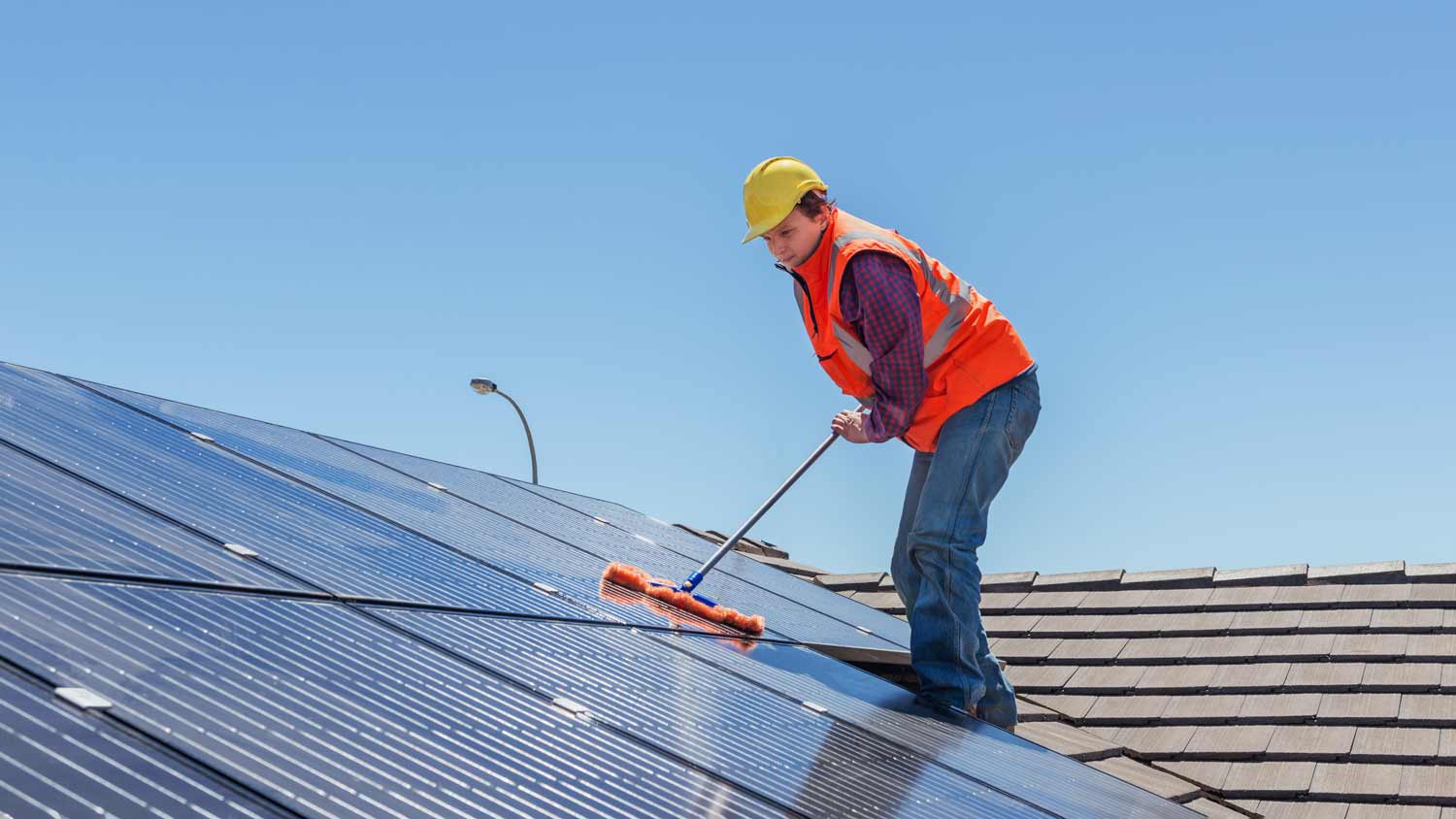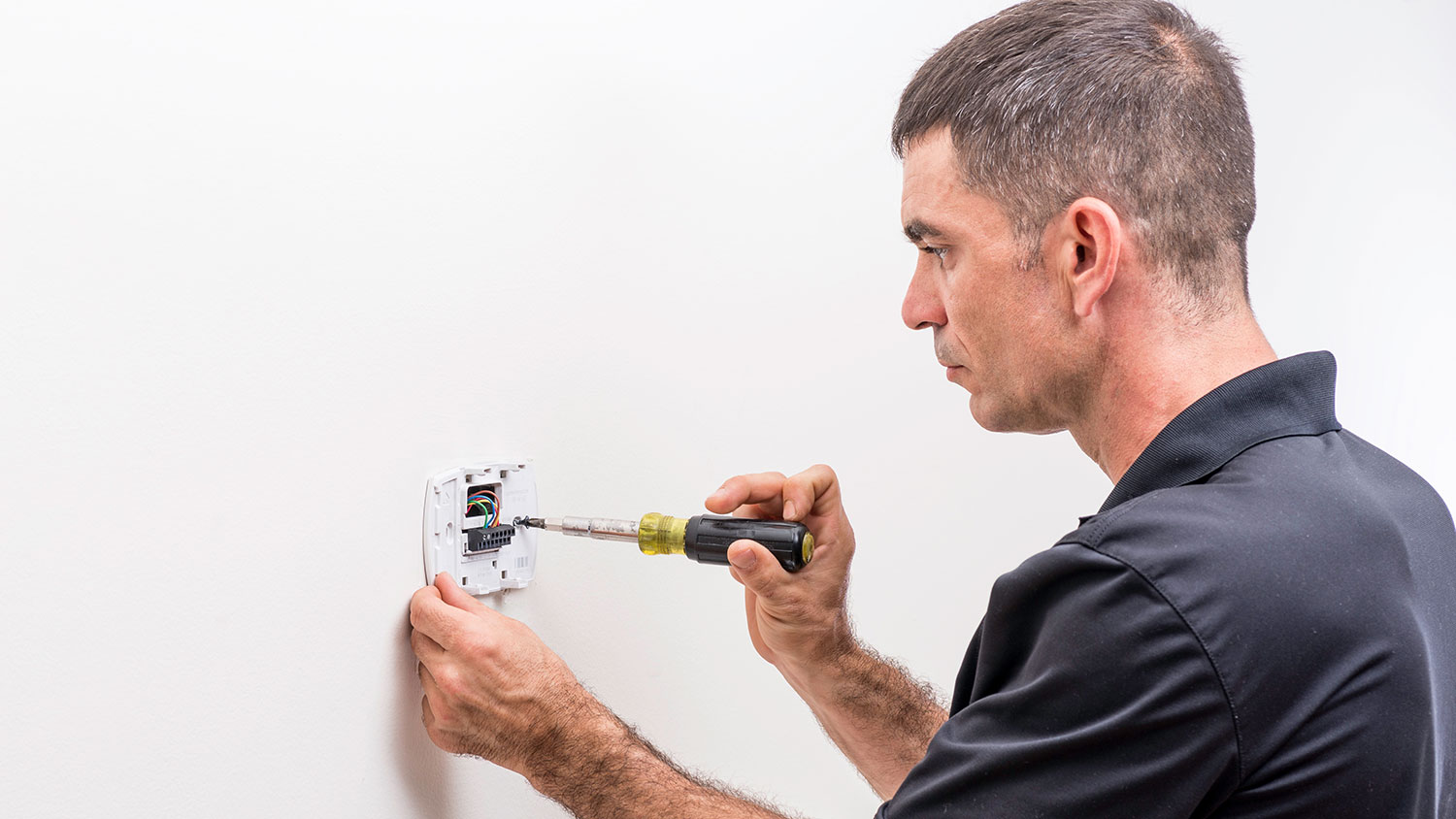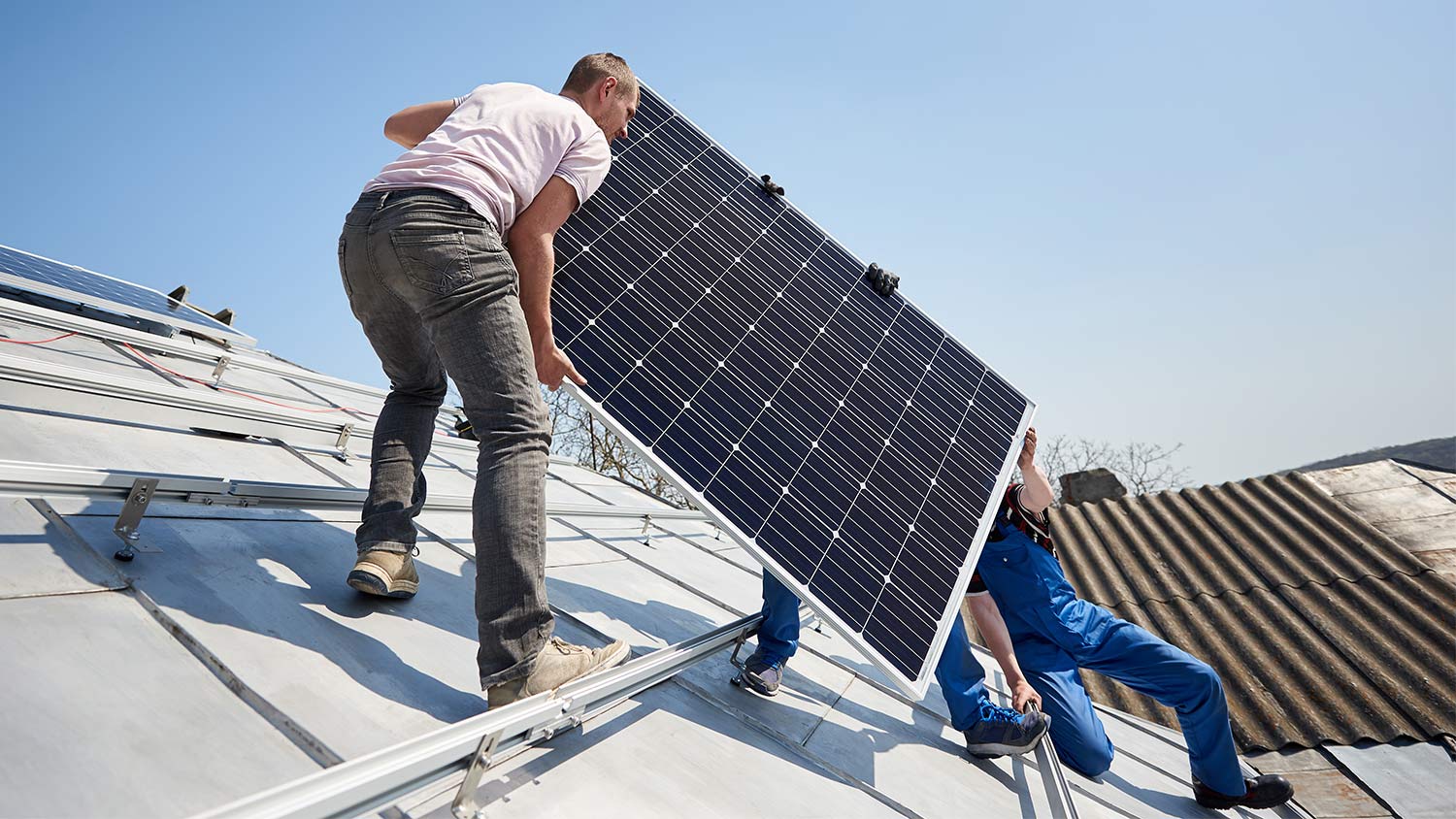
Budget for solar panel repair costs based on factors such as system type, panel size, accessibility, repair type, labor, parts, inspections, and more.
A ductless heat pump costs $6,500 on average to install


Installing a ductless heat pump costs $6,500 on average, ranging from $1,700 to $14,700.
System size, project complexity, and efficiency ratings influence your total cost.
Hiring an HVAC contractor costs $75 to $150 per hour and ensures correct installation and optimized ductless heat pump performance.
Ductless systems offer zoned temperature control for improved comfort and energy savings.
This article was updated using automation technology and thoroughly reviewed for accuracy by HomeAdvisor Editor Ryan Noonan.
A ductless heat pump costs an average of $6,500 to install, with most homeowners spending between $3,000 and $8,000 on average. Because these systems heat and cool, you only pay once for year-round comfort. Partnering with a licensed HVAC pro keeps the warranty intact and safeguards your long-term savings.
Most homeowners pay an average of $3,000 to $8,000 to install a ductless heat pump. Your final bill hinges on system size—both its BTU output and the number of zones you want to control.
Your square footage drives the BTU rating you’ll need to keep every room comfortable. The larger your home, the larger the system you need. You’ll also pay more as you add more zones, not only for the extra wall units but also for the increased power needed to use the extra zones.
Higher SEER2 and HSPF ratings mean greater efficiency—and lower monthly utility bills. More efficient units tend to cost more upfront to purchase, but they translate to lower energy bills over the long run.
HSPF: Rates heating performance; anything above 10 is considered high efficiency.
SEER2: Rates cooling efficiency; look for 14.3 or higher to trim energy use.
Heat pump installation costs are often advertised with one or two zones in kits. A full five-zone setup falls between $5,200 and $14,700 single-zone units run from $2,400 to $5,500.
You’ll pay $1,500 to $3,000 more per zone in ductless heat pump costs, depending on the location, brand, and installation involved. Expect to pay $1,000 more per zone for the equipment alone. Keep the following points in mind when determining how many zones you need:
Each zone adds another interior cassette, including running the refrigerant lines and electricity.
Zones include each room you plan to heat or cool in your home.
Each zone requires more BTUs, which means a larger outdoor unit, adding to the price.
Outdoor units can’t support more than four or five zones. If you need more, you’ll need multiple outdoor units.
| Zone | BTU Range | Average Cost Range |
|---|---|---|
| 1 | 5,000–42,000 | $2,400–$5,500 |
| 2 | 14,000–48,000 | $3,100–$7,800 |
| 3 | 21,000–54,000 | $3,800–$10,100 |
| 4 | 28,000–78,000 | $4,500–$12,400 |
| 5 | 35,000–78,000 | $5,200–$14,700 |
Two or more units make up a ductless heat pump installation, and indoor units are available in different styles and configurations. You can use different types in your space depending on your aesthetic preferences, budget, layout, and other factors.
| Unit Type | Cost Range per Unit |
|---|---|
| Wall mounted | $400–$1,500 |
| Floor mounted | $1,500–$4,000 |
| Ceiling cassette | $1,000–$5,000 |
| Ceiling suspended | $700–$2,000 |
| Outdoor condenser | $750–$5,300 |
Beyond system size, several other factors can nudge your project cost up or down.
Professional HVAC system installation costs $500 to $2,500 in most cases, depending on the number of zones. Extensive, multi-zone jobs can push labor to $5,000 or more. That’s 30% to 50% of the total cost of a mini-split. Installation takes five to 16 hours, but large multi-zoned installs may take longer. Your HVAC pro may also need the help of an electrician or a carpenter.
HVAC professionals charge $75 to $150 per hour to install mini-split heat pump HVAC systems. They’ll also be able to give you quotes and configuration recommendations.
If you need additional construction to accommodate your new ductless heat pump, hiring a carpenter costs $25 to $100 per hour plus trip fees. Expect to pay a total of $200 to $300.
Carpenters can cut holes or alter walls to accommodate the cassette systems or refrigerant lines. You’ll need a pass-through hole for the lines that connect the indoor and outdoor units.
Hiring an electrician costs $50 to $100 per hour or $300 to $900 for this project. Heat pumps require their own dedicated 220-volt circuit. Running a new circuit may also require you to budget for the cost of upgrading your electrical box. You may be able to have your HVAC installer do this work, but most locations require a licensed electrician to install the electrical circuit.
Local climate matters. Colder regions call for pricier cold-weather models that maintain efficiency when temperatures plunge. Northern climates need more efficient systems made specifically for colder climates, which cost more.
The location of your installation affects how long the project takes. The higher the complexity and more inaccessible the areas your local HVAC pro needs to reach, the more you’ll end up paying in labor and added material costs. For larger homes, factor in longer distance for refrigerant lines between the air handler and outside unit, at an average of $5 per linear foot.
Here’s how accessibility can add extra hours—and dollars—to the job:
Higher floor installations require more conduit and wiring.
Installations in attics require the modification or removal of insulation.
Hard-to-reach places require both more work and more materials.
Add an extra hour or more of labor for higher floors and hard-to-access areas.
Permits are necessary to install a new electrical circuit to run the system. If your local regulations require you to obtain an HVAC permit, your installer will know how much a permit costs. Check with your homeowners association before installing anything outside your home.
Adding a ductless heat pump is a smart upgrade that can increase resale value and catch buyers’ attention. These energy-efficient systems are considered desirable home upgrades, offering long-term advantages in lower energy bills and zoned temperature control.
Homeowners may recoup up to 50% of ductless heat pump installation costs through increased home value and lifetime energy savings. Homes with these types of HVAC systems may also sell more quickly than comparable properties in competitive markets, as buyers appreciate the modern technology and potential utility savings.
Keep installation costs in check with these budgeting tips:
Collect at least three professional estimates to compare installation pricing and ensure you’re getting a competitive rate.
Discuss potential models with your local HVAC pro to decide which might work best for your home.
Research federal, state, and local energy efficiency rebates that may significantly offset your installation costs.
Measure your space and determine your BTU requirements accurately to avoid spending too much on an oversized unit.
Estimate your potential energy cost savings over time to justify a slightly higher initial investment in a more efficient system.
No place is more important than your home, which is why HomeAdvisor connects homeowners with local pros to transform their houses into homes they love. To help homeowners prepare for their next project, HomeAdvisor provides readers with accurate cost data and follows strict editorial guidelines. After a project is complete, we survey real customers about the costs to develop the pricing data you see, so you can make the best decisions for you and your home. We pair this data with research from reputable sources, including the U.S. Bureau of Labor Statistics, academic journals, market studies, and interviews with industry experts—all to ensure our prices reflect real-world projects.
From average costs to expert advice, get all the answers you need to get your job done.

Budget for solar panel repair costs based on factors such as system type, panel size, accessibility, repair type, labor, parts, inspections, and more.

Wondering who repairs solar panels? Learn who to call—solar technicians, installers, or electricians—and when to DIY. See costs and smart next steps.

Curious who installs geothermal heating systems? Learn who to call, why a geothermal heating specialist is best, and other pro options.

Who to hire for solar panel maintenance? Learn if a solar repair company or electrician is right, what they do, and typical costs

Who to call to replace a thermostat? Learn whether to hire a thermostat installer, HVAC pro, or electrician and see how pros handle the job

Who installs solar panels? Learn who to hire—certified installers vs electricians—and which certifications protect permits, safety, and your warranty.